Finite Math - University Project: Cookie Production Optimization
VerifiedAdded on 2023/01/23
|7
|1168
|62
Project
AI Summary
This Finite Math project uses linear programming to optimize cookie production. The student formulates an objective function to maximize profit based on the sales revenue of chocolate chip and oatmeal raisin cookies, considering production constraints for three machines (A, B, and C). The project employs a graphical method to solve the linear programming problem, identifying the feasible region and optimal solution. The analysis determines the optimal combination of cookie types (32 cases each) to maximize profit. Part B of the project delves deeper, analyzing machine effectiveness for each cookie type, determining maximum production limits, calculating labor and maintenance costs, and evaluating total profit using solver tools. The project concludes with a summary of the optimal production plan and relevant bibliography.
1 out of 7
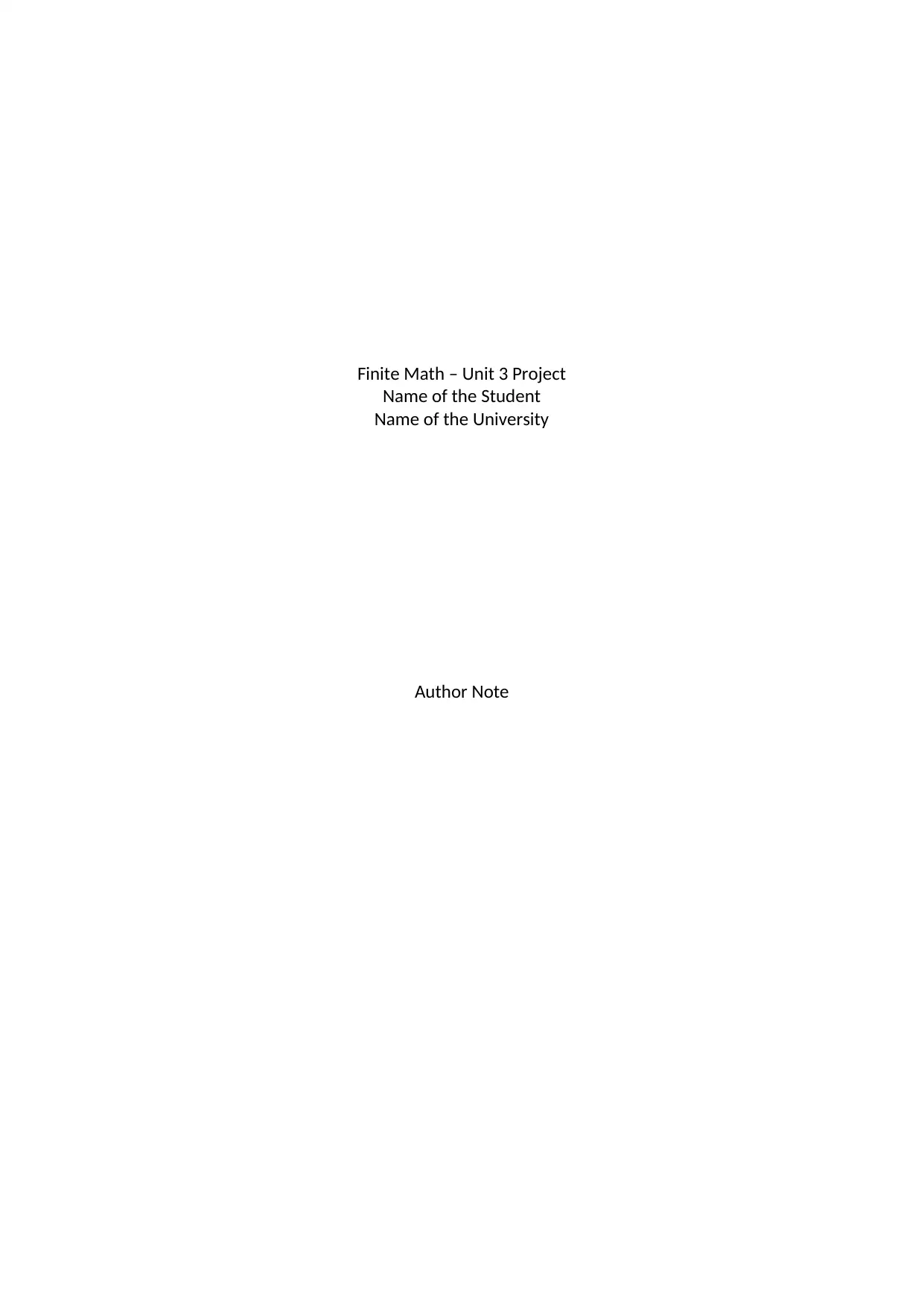
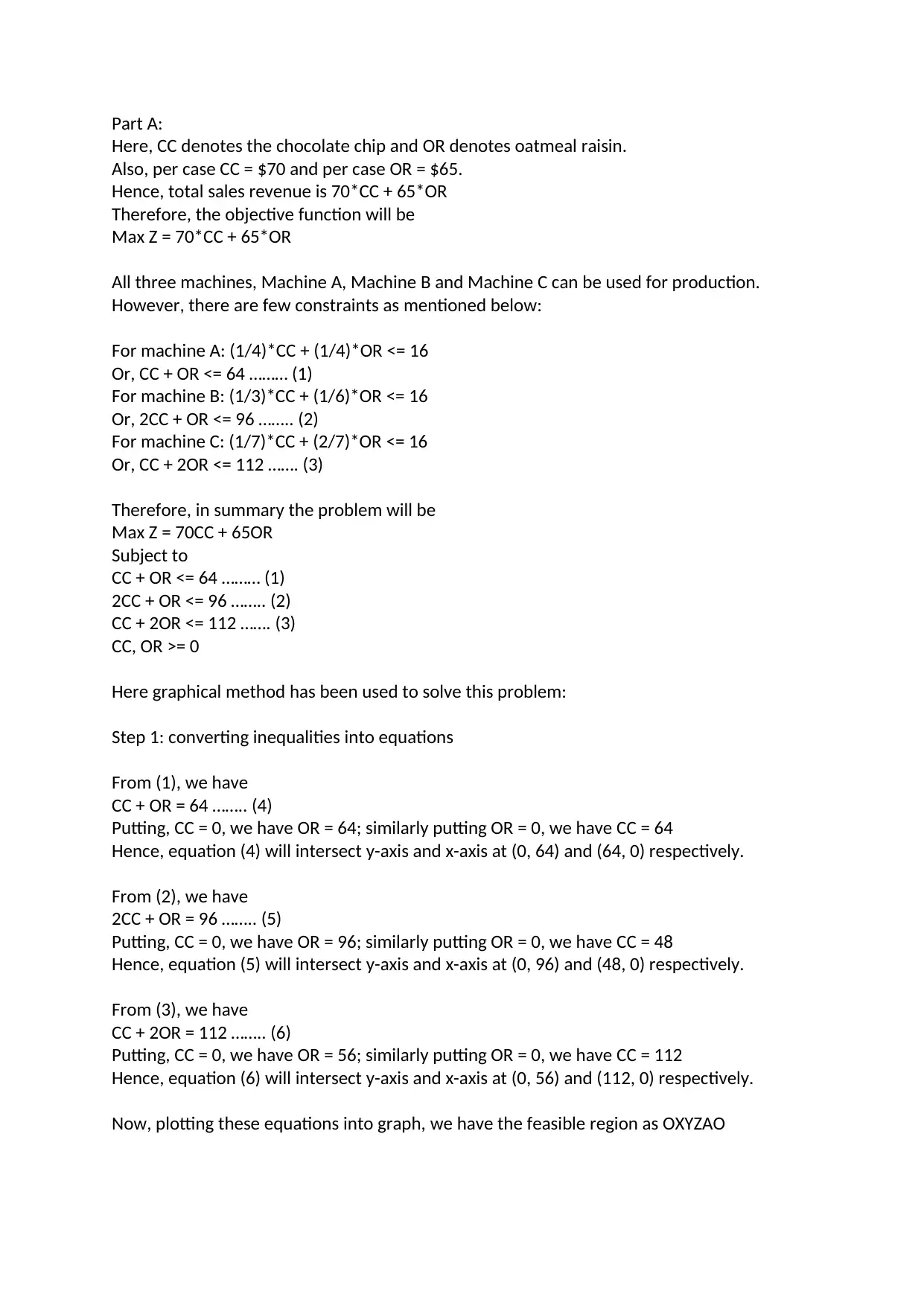
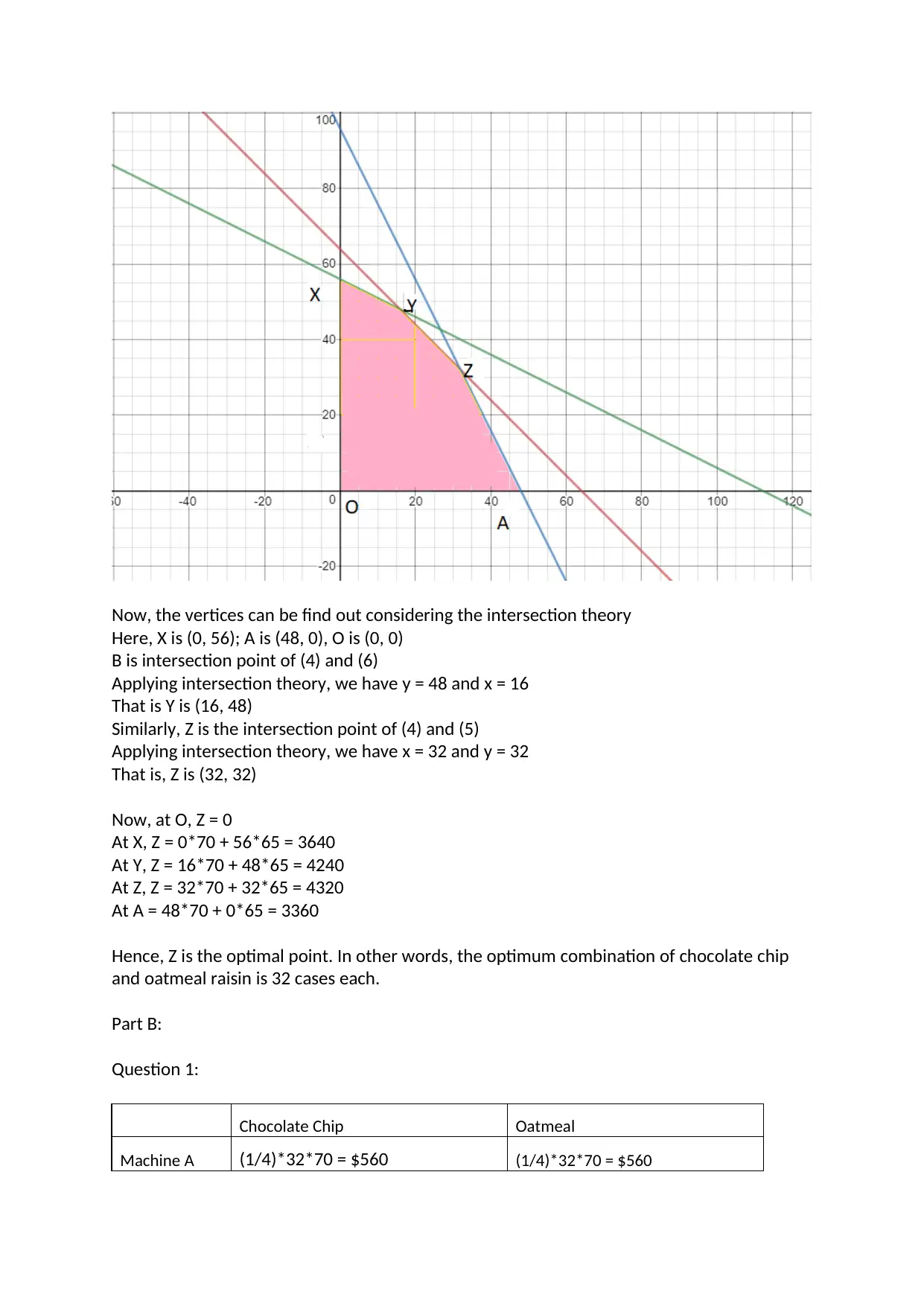

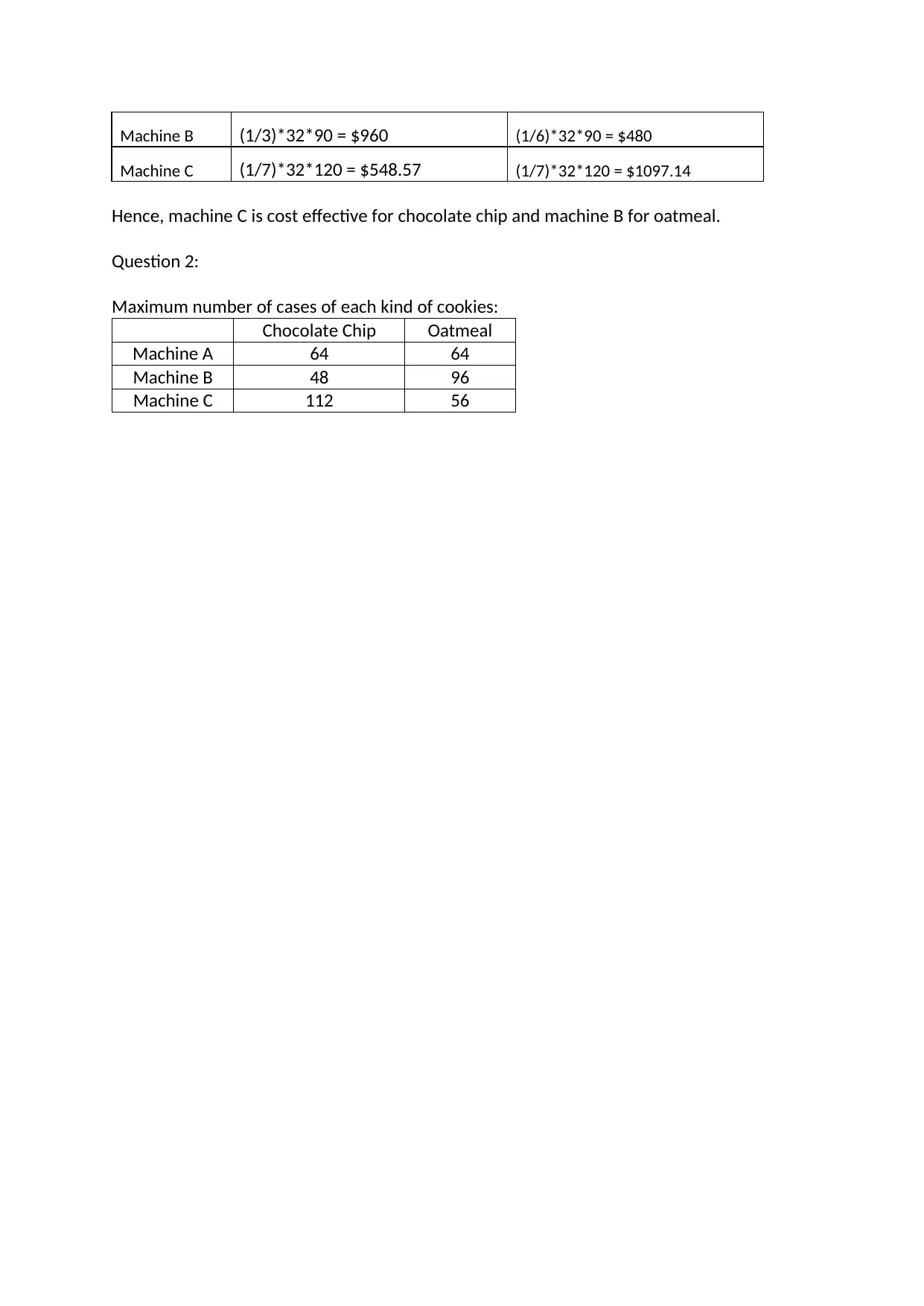
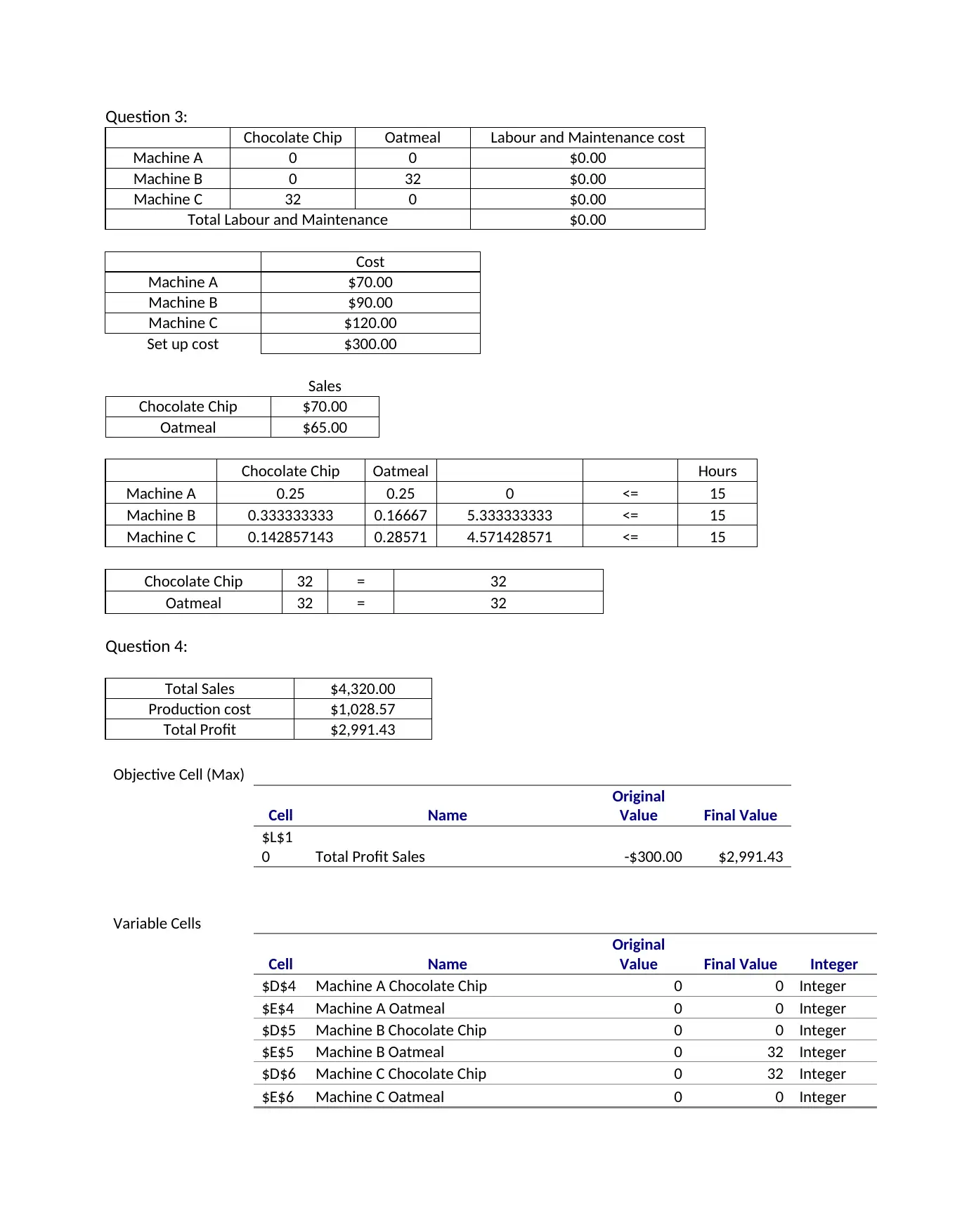
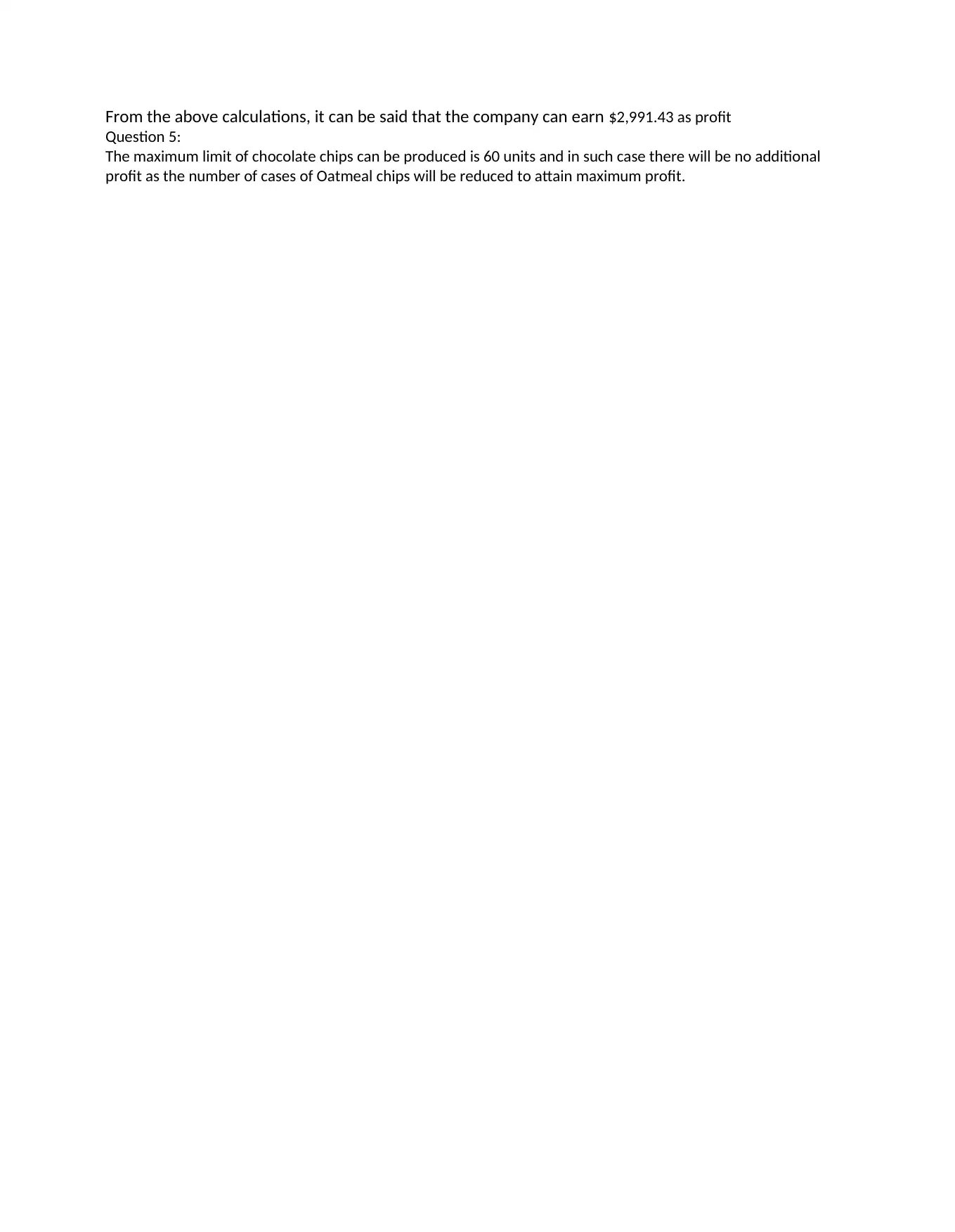
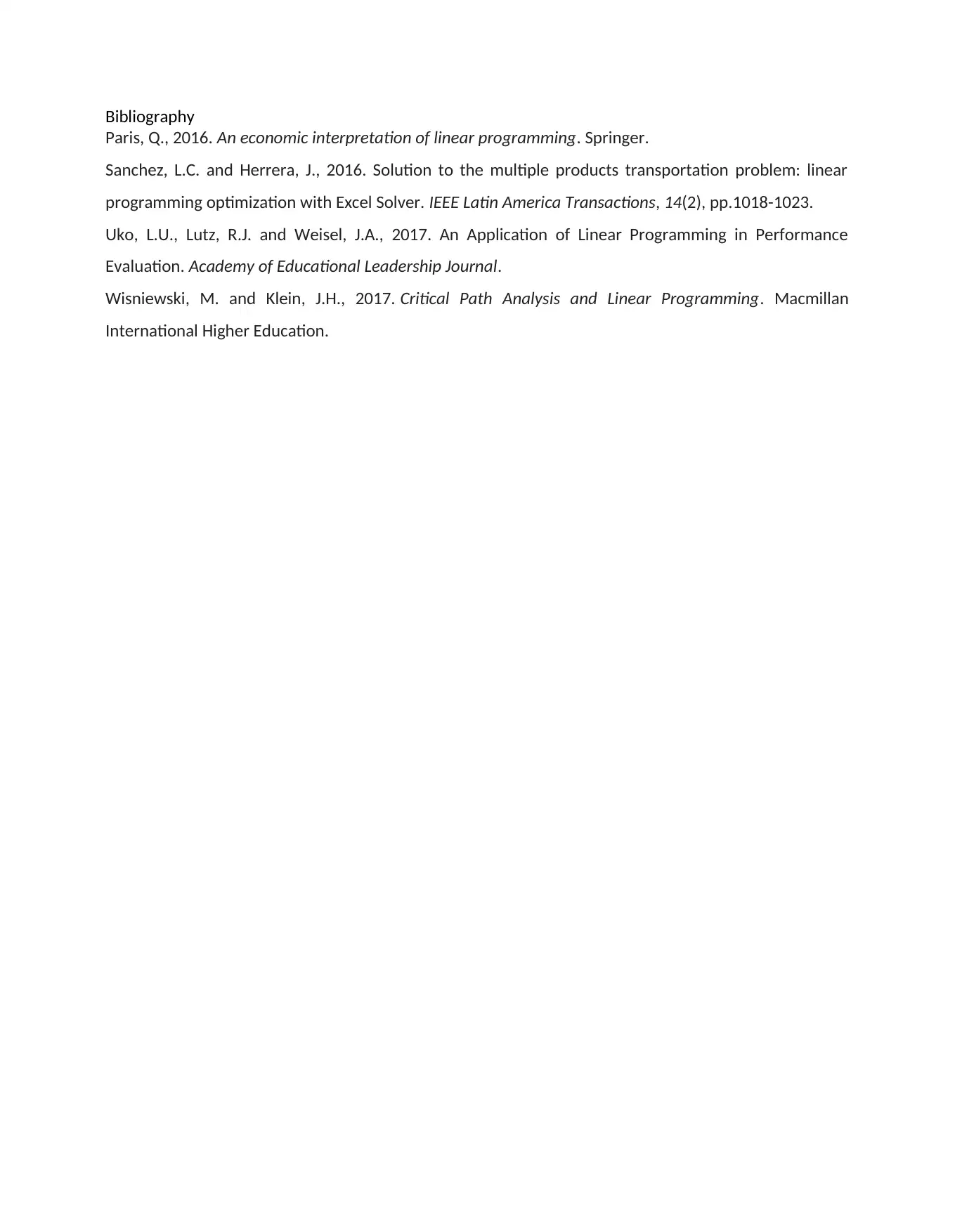



![[object Object]](/_next/static/media/star-bottom.7253800d.svg)